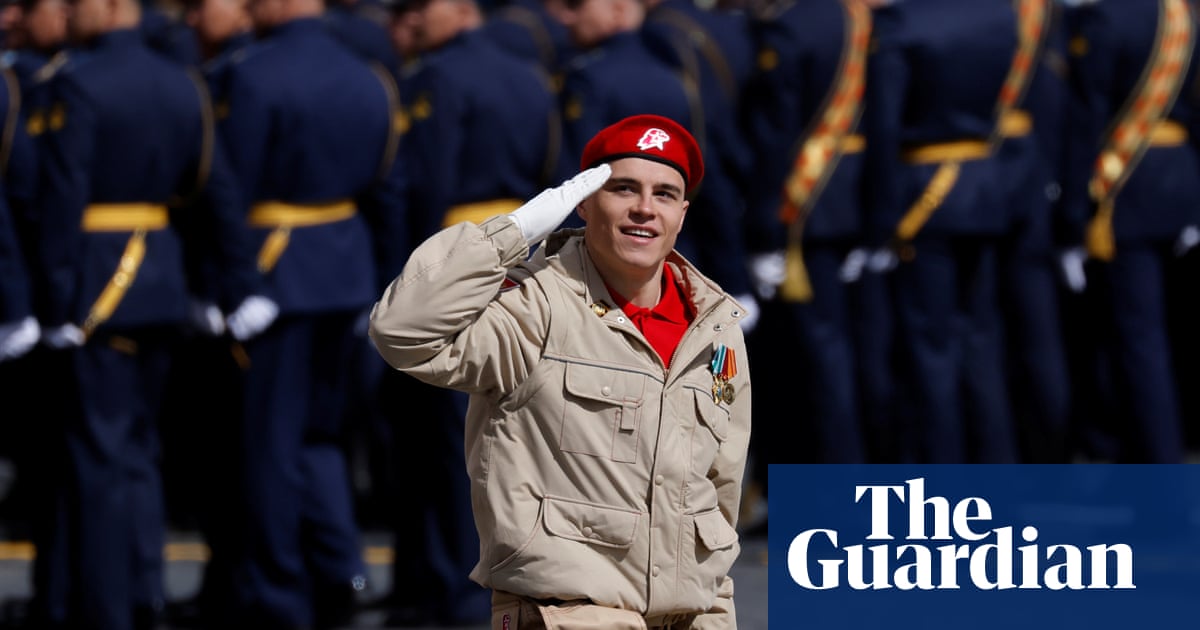Upon his arrival in Moscow this month, Morinari Watanabe, the president of the International Gymnastics Federation (FIG), made a curious decision. As he emerged for meetings, Watanabe was greeted by the gymnast Nikita Nagornyy. The pair embraced in a warm hug before the cameras.
Across his decade on the Russian men’s national team, Nagornyy established himself as one of the great gymnasts of his generation. A former world all-around champion, he led Russia to the men’s team gold at the Tokyo Olympics in 2021. His eponymous triple back pike remains an audacious athletic feat.
He is also, by some measure, one of the most odious characters in the sport. Having built a significant presence on social media as a YouTuber, Nagornyy’s popularity has earned him a significant role in the Kremlin’s war propaganda machine. After joining the National Guard of Russia in 2016, Nagornyy was appointed head of the paramilitary group Yunarmiya, also known as the Young Army, between 2020 and 2024.
Over the past three years, Nagornyy’s Youth Army aids Russia’s invasion of Ukraine as a significant propaganda tool for the Kremlin – the gymnast publicly sent gifts to Russian soldiers on the frontlines – and it has marched in various pro-war parades across Russia. The organisation also trains future recruits for the Russian army and facilitates the abduction of Ukrainian children in occupied territories, “re-educating” them and preparing them for war against their homeland.
For his considerable efforts, Nagornyy has been the subject of sanctions by numerous governments, including those of the US, Canada, the EU and the UK, with the last of these citing his role in the “forced deportation and re‑education of Ukrainian children” for its imposition of measures.
This month, Watanabe visited Russia in order to begin the reintegration of some gymnasts to international competition as individual neutral athletes. Although the FIG has permitted Russian and Belarusian athletes to compete as neutrals since 2023, the Russian gymnastics federation had initially refused to comply with the neutrality rules.
Russia has long been one of the most successful countries in the sport. Their absence has therefore left a significant mark on the sport competitively.
This time, they will finally return to competition. The most notable name cleared to compete is Angelina Melnikova, a member of that victorious Tokyo women’s team, a wonderful athlete and one of the most accomplished gymnasts of her generation. So far, 17 men’s and women’s artistic gymnasts have been approved as neutral athletes. Across the various disciplines, 120 athletes and support staff have been approved.
While there is no way back into competition for the warmongering Nagornyy, his presence at the FIG’s event served as a reminder of the notable role that Russian gymnastics has played in war propaganda and the difficulty of defining neutrality.
Three years ago, after all, gymnastics provided a significant stage for discussions about the presence of Russian athletes in global sport after the Russian gymnast Ivan Kuliak wore a pro-war Z symbol on his chest while standing next to the Ukrainian gymnast Illia Kovtun during a medal ceremony at the World Cup in Qatar. Kuliak, who was eventually banned for a year, received ample support from his Russian peers.
Since then, numerous gymnasts have played significant roles in pro-war propaganda or else have indicated their support of the war. Prominent figures at these events included Viktoria Listunova and Vladislava Urazova, two teenage prodigies in the 2021 Olympic team gold medal effort who later stood front and centre on stage at pro-war rallies while wearing Z symbols. Listunova was not approved as a neutral athlete.
after newsletter promotion
At this point, it is far easier to list Russian gymnasts who have not been supportive of war propaganda in some way. Although Melnikova did not ever join her teammates on stage at pro-war parades, she has been pictured attending a victory day parade while holding a leaflet with the Z symbol. She also trains at the central sports club of the army (CSKA), a club famous for its connections to the military.
According to the FIG’s ad hoc rules, which list the conditions of participation for individual neutral athletes from Russia and Belarus, gymnasts must have no link to the Russian or Belarusian military, or other security agencies, which includes not being contracted with “any affiliated entities”. Given they compete at CSKA, it is unclear if Melnikova and a number of other approved athletes truly clear that hurdle.
This is a complicated subject, but the FIG has done a poor job of implementing its rules with clarity, meaning its decision-making appears inconsistent. Rather than publicly explaining the rationale behind the acceptance and rejection of individuals, the FIG has simply posted a basic list of neutral athletes cleared to compete internationally, which it says has been decided by an “ad hoc committee”.
In lieu of greater transparency, it is hard not to look at the warm embrace between Watanabe and Nagornyy and wonder what deals behind the scenes may have been struck to initiate the return of athletes from one of the few true powerhouse gymnastics countries.
